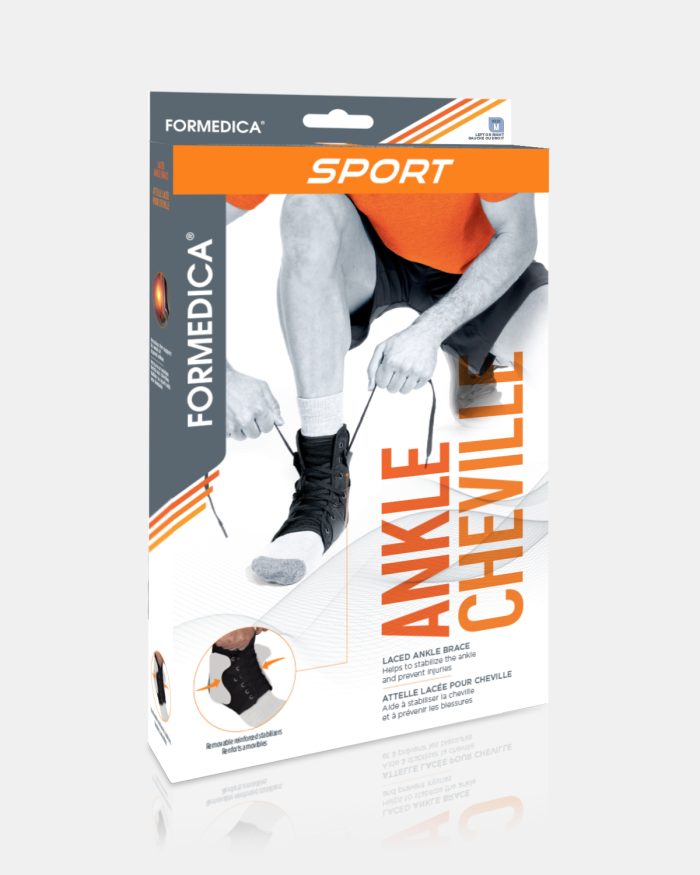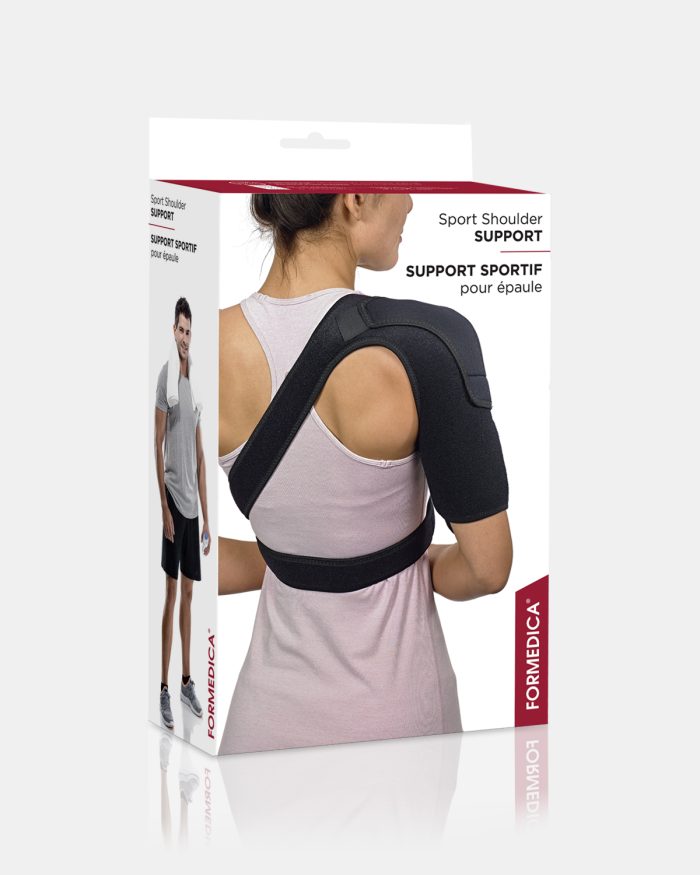When we talk about the risks associated with a construction site, we automatically think of motor vehicle accidents that take the lives of workers, or dramatic falls that render workers paraplegic. This may be a consequence of the CSST’s high-impact campaigns, which force us to consider the worst-case scenarios to encourage employers and employees to follow basic safety measures. But at the same time, we tend to oversee musculoskeletal disorders (MSDs), which, in comparison, appear like minor injuries. Yet, year after year, MSDs account for thousands of disability claims in the public works and civil engineering sector.
In fact, the 2007-2008 Québec study on working, employment and OHS conditions (EQCOTESST) shows that qualified and non-qualified workers, manoeuvres, and, even more so, men with manual occupations are more prone to work-related musculoskeletal disorders than workers in any other occupational fields. According to a study led by the Agence de la santé et des services sociaux de Montréal, MSDs among public works and civil engineering workers represent 28% of compensated injuries within the Montreal region. It is therefore a major health concern.
HOW DO WE EXPLAIN THIS HIGH RATE OF INJURIES AMONG MEN WHO ARE RECOGNIZED FOR THEIR STRENGTH?
Factors that lead to work-related MSDs can be grouped in four categories:
- Organizational factors, that is, factors that are the result of poor work logistics and bring about situations that are more difficult to manage. For instance, very tight work deadlines, inadequate equipment, etc.
- Biomechanical factors, which include everything that is related to tasks that require taxing physical efforts. Biomechanical factors that can lead to MSDs include tasks that require great strength, awkward or static postures, and repetition.
- Individual factors, which are directly linked to workers; for instance, age of workers or years spent performing demanding tasks.
- Aggravating factors, which include all other factors that can make certain tasks even more difficult for employees; namely, weather conditions, vibrations, stressful environments, etc.
Regarding the high rate of MSDs among public works and civil engineering workers, it can be explained by the fact that these workers are generally subjected to additional organizational and physical constraints, when compared to mixed or non-manual sectors. They are often asked to:
- Lift and carry heavy loads;
- Work with their arms raised and extended;
- Push and pull repeatedly;
- Bend and hunch over;
- Kneel and crouch;
- Use vibrating equipment;
- Move around with heavy weights or across obstacles;
- Climb up and down with a load.
These many movements often require the over-solicitation of muscles and tendons around joints and contribute to their feebleness, not to mention terrains that are high-risk environments for MSDs of all kinds.
HOW TO RECOGNIZE, PREVENT AND RELIEVE SMDS IN WORKERS AND, AS A RESULT, CONSTRUCTION SITES
According to the survey conducted by the Agence de santé et des services sociaux de Montréal, MSDs in public works and civil engineering workers most commonly affect the lower limbs. The most widespread MSD diagnosis is “sprain, strain and ligament inflammation” attributed to “efforts and reactions of the body”.
More generally, physical and particularly demanding constraints associated with construction occupations can lead to a predisposition to a wide variety of afflictions that affect both lower and upper limbs. Here are a few:
HERNIATED DISKS AND SCIATICA
A herniated disk occurs with the protrusion of an intervertebral disc, that is one of the discs found between each of the 24 spine vertebras and whose function is to absorb shocks caused by movements. It most often occurs in the lower back vertebras, which can result in localized pain and pain along the leg (called sciatica).
The basic treatment consists in resting, which includes putting a stop to whatever activity is causing the pain, as well as medication to relieve pain and reduce swelling. In most cases, pain caused by a hernia dissipates after four to six weeks of treatment and precautions. However, the risk of a relapse remains high so caution is important.
Belts designed specifically to protect workers’ backs can help prevent lower back pain and disk herniation.
ROTATOR CUFF TENDINITIS
Rotator cuff tendinitis refers to swelling of the tendons between the arm and the shoulder. It mainly affects individuals who work with their arms raised above their shoulders, as is the case for carpenters, plasters and painters. It is characterized by pain and loss of mobility in the shoulder area.
It is essential to treat rotator cuff tendinitis from the onset of symptoms to avoid complications. The shoulder is a particularly vulnerable joint, as it risks freezing or blocking further to a tendinitis. During the first 48 to 72 hours, it is imperative to attempt to relieve pain and swelling by resting the shoulder and applying ice three to four times a day, for approximately 10 minutes.
During the rehabilitation phase, physiotherapy can help reduce swelling or residual pain, and regain mobility.
BURSITIS
The term “bursitis” refers to a swelling of the synovial bursa, a small fluid-filled sac around the joints, between the tendons and bones. The most commonly affected joint is the shoulder, but elbows, knees and hips can also be affected. Swelling often results from repetitive stress to the joints or continuous pressure to the bursa, for instance when kneeling.
Bursitis is characterized by pain around the affected joint, sometimes accompanied by redness, sensitivity and swelling. It is generally treated by resting the affected area. This rest period can be enhanced with the use of a splint. Ice applied to the area and anti-inflammatory medication can also help alleviate pain.
EPICONDYLITIS
Epicondylitis is a painful affliction that is caused by the overexertion of the tendons of the extensor muscles attached to the epicondyle (a small projection on the external side of the upper arm bone, near the elbow). It often results from certain movements, such as gripping, moving, twisting, or extending the arm.
It can manifest itself in many ways. At work, pain sometimes appears when trying to screw in an object, or carry a heavy load at arms’ length. Movements that entail rotation of the forearm can also cause acute pain.
The best treatment for epicondylitis is rest and avoiding the very movements that led to the lesion. Ice applied locally or the use of analgesics also contributes to the relief of symptoms. During rehabilitation, splints designed to reduce muscle tension can become necessary to perform the wrist movements that originally led to the problem.
CARPAL TUNNEL SYNDROME
Carpal tunnel syndrome is caused by compression of the nerve located between the wrist and the hand, just above the wrist. In these cases, the narrow passage (or tunnel, as the name implies) in which the nerve is located begins to shrink, thereby compressing the nerve and causing swelling.
Carpal tunnel syndrome is often caused by the repetition of wrist and forearm movements, tight gripping, and manipulation of vibrating tools. It is characterized by numbing of the hand and fingers, wrist and palm pain, as well as difficulty grabbing objects, even light ones.
Its treatment essentially consists in resting the wrist and stopping the activity that is at the origin of the syndrome, or modifying its pace and intensity. The use of a splint at night can also be recommended to avoid bending the wrist and compressing the median nerve during sleep. As for other similar afflictions, applying ice and taking anti-inflammatory medication can help relieve pain.
ACHILLES TENDINITIS
Achilles tendinitis is characterized by severe pain in the heel or Achilles tendon (a very sensitive part of the body located below the calf, on the heel). It may also cause pain or stiffness in the calf area.
This tendinitis is caused by the swelling of the Achilles tendon or micro fractures in different areas of the tendon. Repeated excessive effort and ill-fitted footwear are often the source of the problem.
Rest, ice and analgesics are, once again, part of the treatment in the acute phase of the affliction. A heel pad or orthotic insoles can also be beneficial.
CONSULT YOUR PHYSICIAN
In all cases, the onset of symptoms that resemble a musculoskeletal disorder should prompt a consultation with a healthcare professional in order to obtain a precise diagnosis and be given the appropriate treatment. This remains the best way to avoid complications that may prolong pain and forced leaves.
SOURCES
- http://www.inspq.qc.ca/pdf/publications/1336_EnqQuebCondTravailEmpSantSecTravail.pdf
- http://publications.santemontreal.qc.ca/uploads/tx_asssmpublications/978-2-89673-214-2.pdf
- http://www.allodocteurs.fr/actualite-sante-tms-la-douleur-du-geste-repetitif-895.asp?1=1&IdBloc=Tout
- http://www.tmsbtp-attentionfragile.fr/Lesfacteursderisque/9gestes%C3%A0risquesurunchantier.aspx
- http://www.labour.gov.on.ca/french/hs/pubs/poster_consites.php

